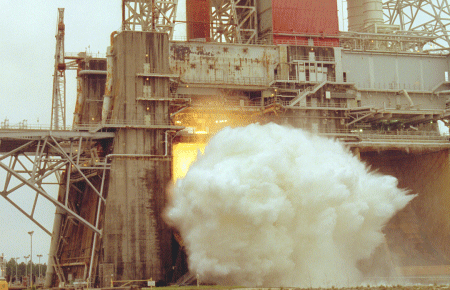Tim Furniss/LONDON
Boeing has conducted the first in a series of hot-fire tests of the 656,400lb-thrust (2,920kN) Rocketdyne RS-68 cryogenic engine fitted to the Common Core Booster (CCB) of the Delta IV US Air Force Evolved Expendable Launch Vehicle (EELV).

The 15s test at the Stennis Space Center, Mississippi will lead to full-duration 330s burns, mimicking the first stage ascent of the vehicle due for first flight early next year.
The mission will either be a company-funded demonstration flight or a commercial launch preceding the first EELV launch in May 2002 of a US Air Force Defense Space Communications System (DSCS) satellite.
The liquid oxygen-liquid hydrogen RS-68 engine has been tested for over 1,000s, demonstrating that Boeing appears to have overcome earlier problems with turbopump blade components.
The CCB allows all five variants of the Delta IV to use common systems and assemblies. Delta IV Medium, Medium-Plus and Large versions will place payloads ranging from 4.2t to 13.1t in geostationary transfer orbit. Meanwhile, EarthWatch, the commercial remote-sensing satellite-imaging company, has selected a Boeing Delta II to launch its third satellite QuickBird 2 later this year.
QuickBird 2, the highest resolution commercial imaging satellite yet to fly, will follow the company's Earth Bird and QuickBird 1 satellites which were launched in December 1997 and last year respectively. Both were subsequently lost.
QuickBird 2 was first manifested to fly on a Russian booster, but the Delta was subsequently chosen because of an "outstanding record" of 39 consecutive successful flights, says EarthWatch.
The 1t satellite will be placed into a 450km (280 mile) sun-synchronous orbit to provide images to compete with Space Imaging's Ikonos and the Early Bird 1 satellite operated by the Israel-led ImageSat company.
Source: Flight International























